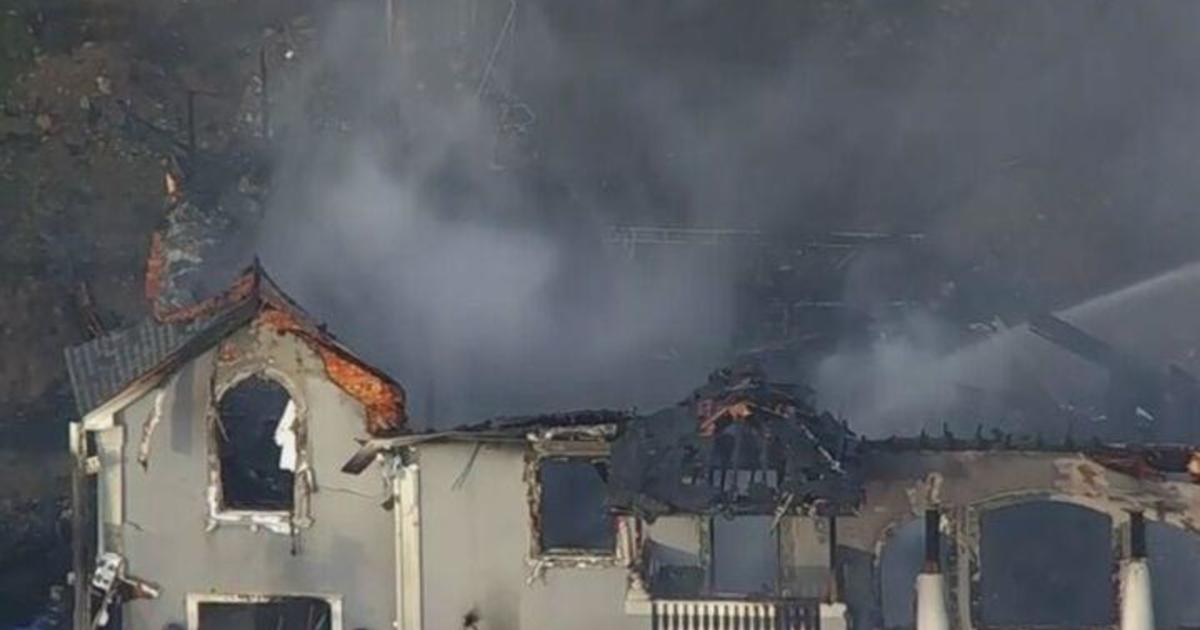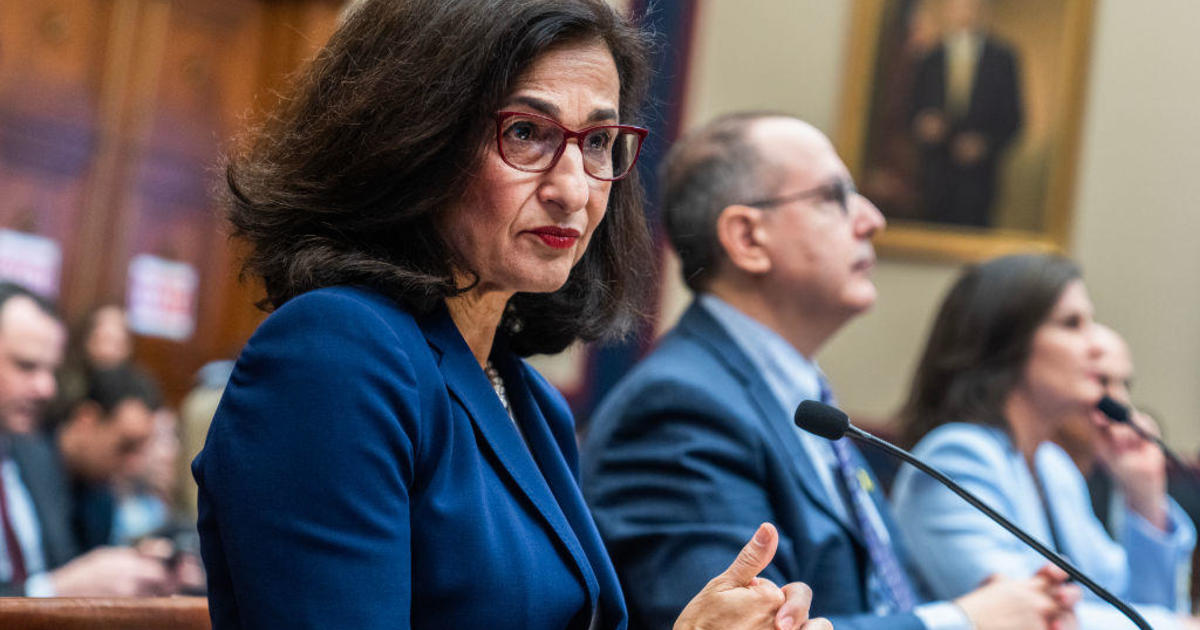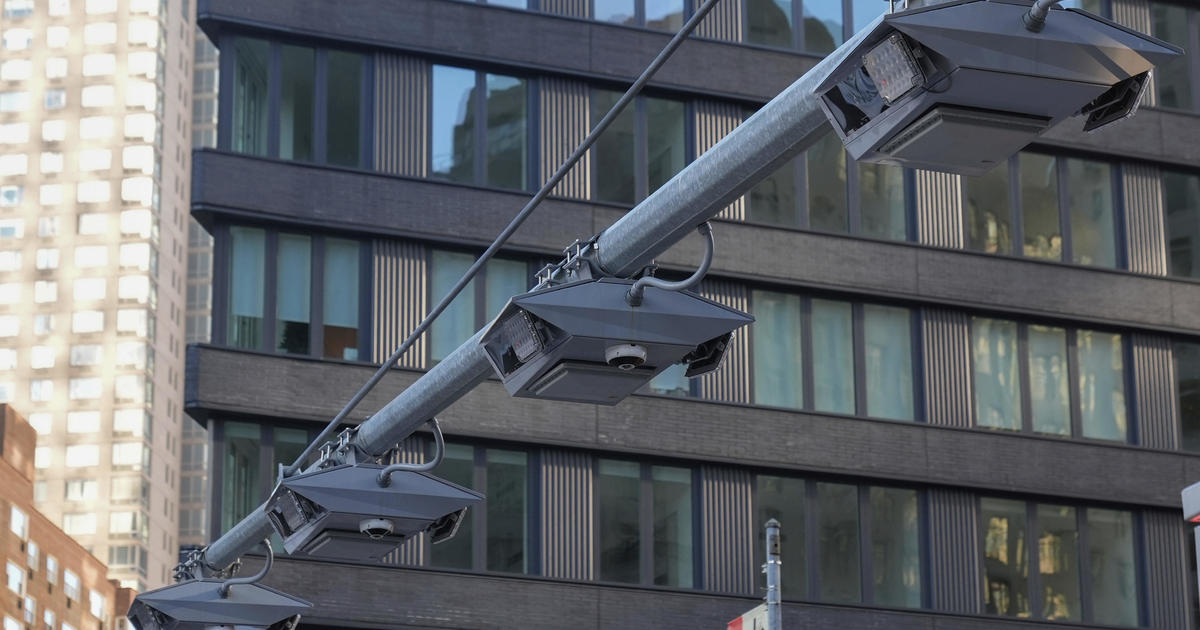Victims' Names Won't Be Listed Alphabetically At 9/11 Memorial
NEW YORK (AP / CBSNewYork) - Victor Wald and Harry Ramos did not know each other until Sept. 11, but they died together trying to flee down a stairwell of the World Trade Center.
Their names will be next to each other's on the national memorial at Ground Zero, one of hundreds of arrangements that emphasize victims' connections, not in alphabetical order.
The National September 11 Memorial & Museum on Wednesday announced the final arrangement of the nearly 3,000 names around the waterfall-filled pools formed in the footprints of where the original World Trade Center towers stood.
WCBS 880's Sean Adams: Names Will Be Etched In Bronze
Podcast
Michael Arad, the memorial architect, said that stories of the individuals' lives will inevitably emerge from the names' arrangement. "I think those individual stories will communicate very powerfully to generations to come,'' he said.
LINK: Official Website of the 9/11 Memorial
The announcement did not satisfy all survivors, especially given the complexity of the arrangement of the names. The memorial planners said they had mailed letters to more than 3,500 next-of-kin to tell them the location of victims' names. They also announced a web application to locate them.
The application will be running on handheld devices, tablet computers and electronic kiosks on the plaza of the memorial when it opens in September, the tenth anniversary of the attacks.
SEE: Latest Photos Of World Trade Center And 9/11 Memorial From Chopper 880
Listed on the memorial will be the names of the 2,976 people killed in the Sept. 11, 2001, attacks in New York, Washington, D.C., and Pennsylvania; and the six people who died in the Feb. 26, 1993, bombing of the World Trade Center. The 9/11 victims are grouped on the memorial according to which flight they were on, whether they were first responders, worked at the Pentagon or were in one of the trade center towers.
"The arrangement falls short of what the families always wanted,'' said Edie Lutnick, who lost her brother, Gary Lutnick, 36, a senior partner at Cantor Fitzgerald, in the attacks. "We have always felt that it should have had the affiliations with the civilians, just as there are affiliations for the uniformed services.''
She said the web application would be helpful. "I think that it's wonderful you will be able to see the faces of the people who died,'' she added. "It doesn't take the place of the memorial telling the story.''
It is not only the exclusion of companies' names that angers some survivors; many also are upset that victims' ages won't be listed.
Kurt Horning, of Scotch Plains, N.J., lost his 26-year-old son Matthew when the trade center collapsed. "I can't believe they won't identify ages,'' he said. "It's going to be a list of names, meaningless to anyone who looks at it.''
But Denise Kelly, of Syracuse, N.Y., said she was happy with the arrangement. Her brother Daniel R. Brandhorst and his partner, Ronald L. Gamboa, are listed adjacent to their 3-year-old son, David Reed Gamboa Brandhorst. They were aboard United Flight 175 when it struck the World Trade Center.
"I think it's wonderful they can be kept together on the memorial,'' she said. "That's the way they would have wanted it.''
Family, co-workers at companies located inside the trade center and first responders had asked that certain victims' names be placed together, and the memorial's designers worked to accommodate them.
For instance, Donald James McIntyre, a 38-year-old Port Authority police officer who died as he tried to make his way to the 84th floor of the south tower, where his 35-year-old cousin John Anthony Sherry worked, are listed side by side.
Arad said he was trying to balance the need to make the memorial significant both for the victims' families and for the rest of the world.
"I wanted to find a way to reach out to the families who lost loved ones and find a way for their voices to be part of the memorial,'' he said. "It's a memorial about individual loss and collective grief.''
One of the most contentious debates around the "Reflecting Absence'' memorial has centered on how the names would be listed. Initially, the names were to be listed below ground, but survivors objected. After much debate, it was decided that the names would appear not in alphabetical order, but where the victims had died.
Brigitte Sion, a professor of religion at New York University who has studied memorials worldwide, said listing names is essential to the 9/11 memorial, because of the nature of the terror attacks.
"The need to create a memorial that has names is a surrogate for a cemetery,'' Sion said, adding that many bodies of 9/11 victims have yet to be found for proper burial. "There's no other place to mourn, there's no other place to have a connection with the victims except there.''
More than 40 percent of the victims in New York have no identifiable remains, but authorities hope to identify thousands more with DNA technology.
(TM and Copyright 2011 CBS Radio Inc. and its relevant subsidiaries. CBS RADIO and EYE Logo TM and Copyright 2011 CBS Broadcasting Inc. Used under license. All Rights Reserved. This material may not be published, broadcast, rewritten, or redistributed. The Associated Press contributed to this report.)



